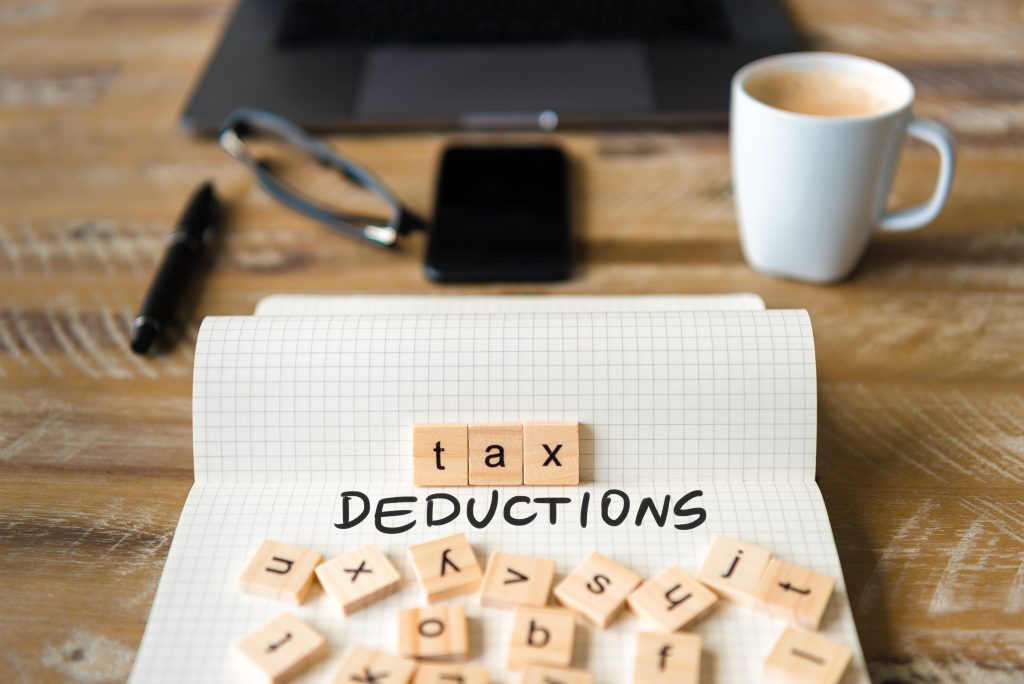Say Goodbye to 100 Percent Bonus Depreciation
All good things must come to an end. On December 31, 2022, one of the best tax deductions ever for businesses will end: 100 percent bonus depreciation.
Wander CPA, Accountant, Tax Advisor Wander CPA, Michael wander
Since late 2017, businesses have used bonus depreciation to deduct 100 percent of the cost of most types of property other than real property. But starting in 2023, bonus depreciation is scheduled to decline 20 percent each year until it reaches zero in 2027.
For example, if you purchase $100,000 in equipment for your business and place it in service in 2022, you can deduct $100,000 using 100 percent bonus depreciation. If you wait until 2023, you’ll be able to deduct only $80,000 (80 percent).
Does this mean you should rush out and purchase business property before 2022 ends to take advantage of the 100 percent bonus depreciation? Not necessarily. For many businesses, an alternative is not going away: IRC Section 179 expensing.
Both IRC Section 179 expensing and bonus depreciation allow business owners to deduct in one year the cost of most types of tangible personal property, plus off-the-shelf computer software. Both can be used for new and used property acquired by purchase from an unrelated party. Both also can be used to deduct various non-structural improvements to non-residential buildings after they are placed in service.
Moreover, the two deductions aren’t mutually exclusive. You can apply Section 179 expensing to qualifying property up to the annual limit and then claim bonus depreciation for any remaining basis. Starting in 2023, when bonus depreciation will be less than 100 percent, any basis left after applying Section 179 and bonus depreciation will be deducted with regular depreciation over several years.
But there are some significant differences between the two deductions:
– Section 179 expensing is subject to annual dollar limits that don’t apply to bonus depreciation. But the limits are so large that they don’t affect most smaller businesses.
– Section 179 expensing requires more than 50 percent business use to qualify for and retain the Section 179 deduction. For bonus depreciation, you face the more than 50 percent business use requirement only for vehicles and other listed property.
– Unlike bonus depreciation, Section 179 expensing is limited to your net taxable business income (not counting the Section 179 deduction) and cannot result in a loss for the year.
– The 2022 Section 179 deduction is limited to $27,000 for SUVs. There is no such limit on bonus depreciation.
– You can use bonus depreciation to deduct land improvements with a 15-year class life, such as sidewalks, fences, driveways, landscaping, and swimming pools.
Generally, there is no great need to purchase and place the property in service by the end of 2022 to take advantage of 100 percent bonus depreciation. But there can be exceptions.
For example, if you own a rental property and want to make substantial landscaping or other land improvements, you’ll get a larger one-year depreciation deduction using 100 percent bonus depreciation in 2022 than if you wait until 2023, when the bonus will be only 80 percent.
Avoid These Mistakes When Converting to an S Corporation
At first glance, the corporate tax rules for forming an S corporation appear simple. They are not.
Wander CPA, Accountant, Tax Advisor Wander CPA, Michael wander
Basic Requirements
Here is what your business must look like when it operates as an S corporation:
– The S corporation must be a domestic corporation.
– The S corporation must have fewer than 100 shareholders.
– The S corporation shareholders can be only people, estates, and certain types of trusts.
– All stockholders must be U.S. residents.
– The S corporation can have only one class of stock.
Simple, right? But what often appears simple on the surface is not so simple at all.
Don’t Forget Your Spouse
If you live in a community property state, your spouse by reason of community property law may be an owner of your corporation. This can be true whether or not your spouse has stock in his or her own name.
If your spouse is an owner, your spouse has to meet all the same qualification requirements you do. This can raise two issues:
– If your spouse does not consent to the S corporation election on Form 2553, your S corporation is not valid.
– If your spouse is a non-resident alien, your S corporation is not valid.
Converting an LLC to an S Corporation
Method 1. To convert your LLC to an S corporation for tax purposes, you can use a method we call “check and elect.” It’s easy—just two steps. First, you “check” the box to make your LLC a C corporation. Then, you “elect” for the IRS to tax your C corporation as an S corporation. Here’s how you take the two steps:
– File IRS Form 8832 to check the box that converts your LLC to a C corporation.
– Then file Form 2553 to convert your C corporation into an S corporation.
Method 2. Your LLC can skip the C corporation step and directly elect S corporation status by filing Form 2553.
Loans That Terminate S Corporation Status
Don’t make a bad loan to your S corporation. With the wrong type of loan, you enable the IRS to treat that loan as a second class of stock that disqualifies your S corporation.
Small loans are okay. If the loan is less than $10,000 and the corporation has promised to repay you in a reasonable amount of time, you escape the second-class-of-stock trap.
Larger loans are more closely scrutinized. If you have a larger loan, your loan escapes the second-class-of-stock trap if it meets the following requirements:
– The loan is in writing.
– There is a firm deadline for repayment of the loan.
– You cannot convert the loan into stock.
– The repayment instrument fixes the interest rate so that the rate is outside your control.
Wander CPA, Accountant, Tax Advisor Wander CPA, Michael wander
Buying an Electric Vehicle? Know These Tax Law Changes
There’s good and bad news if you’re in the market for an electric or plug-in hybrid electric vehicle
Wander CPA, Accountant, Tax Advisor Wander CPA, Michael wander
The good news is that the newly enacted Inflation Reduction Act includes a wholly revamped tax credit for electric vehicles that starts in 2023 and continues through 2032.
The bad news is that the credit, now called the “clean vehicle credit,” comes with many new restrictions.
The clean vehicle credit remains at a maximum of $7,500. But beginning in 2023, to qualify for the credit,
– you will need an adjusted gross income of $300,000 or less for marrieds filing jointly or $150,000 or less for singles; and
– you will need to buy an electric vehicle with a manufacturer’s suggested retail price below $80,000 for vans, SUVs, and pickup trucks, or $55,000 for other vehicles.
But that’s not all. The 2023-and-later credit includes new domestic assembly and battery sourcing requirements.
The new law reduces or eliminates the credit when the vehicle fails the battery sourcing requirements. Currently, no electric vehicle will qualify for the full $7,500 credit. Manufacturers are working feverishly to change this, but it could take a few years.
The new credit is not all bad—it eliminates the cap of 200,000 electric vehicles per manufacturer. Thus, popular electric vehicles manufactured by GM, Toyota, and Tesla can qualify for the new credit if they meet the price cap and other requirements.
And then, starting in 2024, you can qualify for a credit of up to $4,000 when purchasing a used electric vehicle from a dealer (not an individual). But income caps also will apply to this credit.
Also, starting in 2024, you’ll be able to transfer your credit to the dealer in return for a cash rebate or price reduction. This way, you can benefit from the credit immediately rather than waiting until you file your tax return.
If you are locked out of the new credit because your income is too high or you wish to purchase a too-expensive electric vehicle, consider buying a qualifying electric vehicle (assembled in North America) on or before December 31, 2022.
If you buy an electric vehicle for business use in 2023, you have a second option: the commercial clean vehicle credit.
Claim Your Employee Retention Credit
If you had W-2 employees in 2020 and/or 2021, you need to look at the Employee Retention Credit (ERC).
Wander CPA, Accountant, Tax Advisor Wander CPA, Michael wander
As you likely know, it’s not too late to file for the ERC. And now is a good time to get this done.
You can qualify for 2020 credits of up to $5,000 per employee and 2021 credits of up to $7,000 per employee for each of the first three quarters. That’s a possibility of $26,000 per employee.
One of our clients—let’s call him John–had 10 employees during 2020 and 2021. He qualified for $260,000 of tax credits (think cash). You could be like John.
You claim and adjust the ERC using IRS Form 941-X, which you can file anytime on or before March 15, 2024, if you file your taxes as a partnership or an S corporation, or April 15, 2024, if you file on Schedule C of your Form 1040 or as a C corporation.
You have three ways to qualify for the ERC:
– Significant decline in gross receipts. Here, you compare the gross receipts quarter by quarter to those in 2019. To trigger any ERC under this test, you need a drop of more than 50 percent in 2020 and a drop of more than 20 percent in 2021.
– Government order that causes more than a nominal effect. Here, your best bet is to use the safe harbor for nominal effect. This requires looking at either your 2019 quarterly receipts or your 2019 quarterly hours worked by employees, and seeing that the 2020 or 2021 shutdown order would have affected the 2019 figures by more than 10 percent.
– Government order causes a modification to your business. Here, you also have a safe harbor. The IRS deems that the federal, state, or local COVID-19 government order had a more-than-nominal effect on your business if it reduced your ability to provide goods or services in the normal course of your business by not less than 10 percent.
The ERC can help all businesses that qualify, even those businesses that did not suffer during the COVID-19 pandemic.







